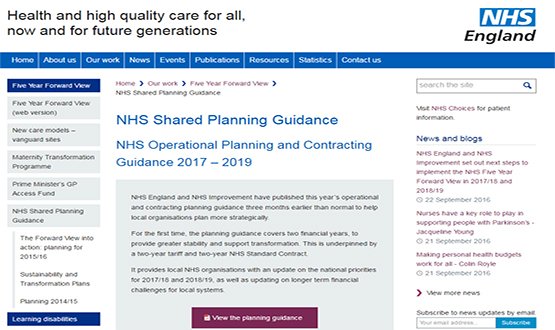Kelsey: 2020 is a ‘hard stop’
- 13 November 2014

The deadline in the National Information Board’s new IT strategy for all patient and care records to be digital by 2020 is a “hard stop” that must be met if the NHS in England is to remain viable, Tim Kelsey has said.
Speaking to EHI, NHS England’s director of patients and information added that more information about the framework, including detail on how the proposals will be turned into reality, should be released before the end of the year.
‘Personalised Health and Care 2020’, issued this morning, says it is “not a strategy in the conventional sense” and “not a national plan.” Instead, it says it is a “framework for action” by staff, patients and citizens.
It seeks to align NHS IT priorities with national policy priorities, and to strike a new balance between national and local action when it comes to IT procurement and development.
Kelsey said the document will help to improve the relationship between health IT and the health and care system as a whole.
“This marks really the first time that all the various national bodies in health and care, with local government and clinical leaders, have expressed a national purpose around making better use of technology a fundamental part of the health and care service.
“Technology is as fundamental to quality and effective healthcare as breathing is to human life, but for some bizarre reason, it’s been pushed as some sort of engineering challenge that the IT guys need to take responsibility to deliver.”
Kelsey said that a significant aspect of the framework is its set of proposals to give the public “much greater control” over their care. This includes plans to allow patients to view and write into all of their records by March 2018.
“It’s about having a partnership between clinicians and patients for a co-produced record, much more than is currently the case – we will be leading the world in giving patients access to their data on such a large scale.”
Kelsey said NHS Choices will function as a single point of access to enable patients to interact with the NHS and make digital transactions, and that he expected them to use it for healthcare in much the way they use online banking for financial services.
“People will be able to ring us up, email us, text us, tweet us – have a much more modern relationship with us.”
A new system of “kitemarking” for applications to gain NHS approval will also give patients greater confidence in apps and may lead to some being prescribed, he said.
However, he also emphasised the way in which the strategy attempts to both align IT with policy priorities, such as improving quality and efficiency, and with the NHS financial and regulatory frameworks.
This, he said, is why the 2020 deadline to make “all patient and care records digital, real-time and interoperable” is a “hard stop”; along with its supporting target for clinical staff making transitions of care to be doing it without paper records by 2018.
“Some people will look at 2018 and 2020 and say, are they achievable targets? We worked solely on them and we believe they are achievable, but they also have to be achieved by then.
“We don’t need to do it just because it’s safer or better for patients, but because it is absolutely critical to the ability of the NHS to run a much more efficient health service and close the funding gap.”
He also underlined his message in recent speeches that ‘sticks’ will be applied to providers that fail to digitise.
“In the very basic, beating heart of the commissioning and regulatory structures, people will need to have adopted a digital record by 2020, or they will not be treating NHS patients,” he said.
However, he also emphasised that the aim of the plan is to strike a balance between a centralised and a localised approach, “liberating local economies with their own cultures and aspirations” while ensuring they adhere to nationally set standards.
“We don’t want to cramp anyone’s style – a really important piece of learning from the National Programme for IT is that if we really want to galvanise adoption, we need to trust people’s judgement and let them make decisions in the context of a set of standards.”
Kelsey said the NIB organisations will now start working closely with clinicians and patients on developing proposals for implementation. More detailed plans on the “method of delivery” for the proposals and targets are set to be released before Christmas, he said.



